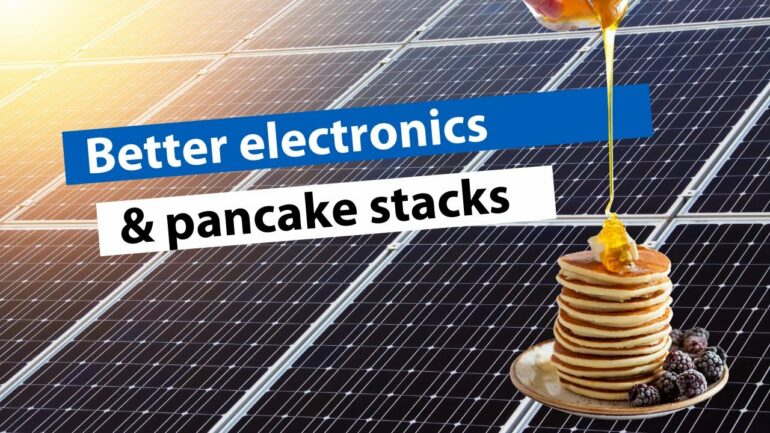Researchers from the University of Calgary (UCalgary), with help from colleagues at the University of Saskatchewan (USask), are one step closer to creating solar electronics that are flexible, powerful, and better for the environment.
Dr. Todd Sutherland, an Associate Professor in the Department of Chemistry at UCalgary, and his team were able to create an organic compound that separates positive and negative components that are essential to solar cells into separate stacks. The group published their findings in Materials Advances.
“Typically, in an organic solar cell, you have electron-rich and electron-poor molecular pieces that stack like pancakes on top of each other,” explained Sutherland.
However, electricity does not easily flow this way. “You would prefer them to be two different stacks of pancakes side by side of all the same type,” said Sutherland.
You can imagine the electricity as a picky eater that prefers to have their plain pancakes separate from their pancakes with toppings. “We took one set of molecules, or pancakes if you will, and bent them using organic chemistry so they don’t stack well with the other type.”
Co-author Dr. Kim Thériault said this change in shape made it much easier to have two organized stacks for better electrical flow.
The idea for this research was sparked by Thériault’s UCalgary doctoral thesis, which looked at the geometry of similar organic materials.
The team took the concept from the thesis—creating a material that could organize itself into segregated stacks of electron-rich and electron-poor molecular pieces—and tested it on the HXMA beamline at the Canadian Light Source (CLS) at USask, with the help of Dr. Tim Kelly from the USask College of Arts and Science.
The group utilized synchrotron light, which is millions of times brighter than the sun, at this beamline to analyze tiny details in their samples.
“The synchrotron was key in determining the structure of our compound,” said Sutherland. “So, it was really pivotal to writing our paper.”
The team hopes this research could ultimately lead to flexible, solar-powered electronics that could be wrapped around materials like windows and be an alternative to current-day solar panels.
More information:
Kim D. Thériault et al, An unusual self-assembling columnar mesogen prepared by tethering a planar naphthalenediimide acceptor to bent phenothiazine donors, Materials Advances (2021). DOI: 10.1039/D1MA00452B
Provided by
Canadian Light Source
Citation:
Using the model of a pancake stack to make better solar cells (2022, March 8)



